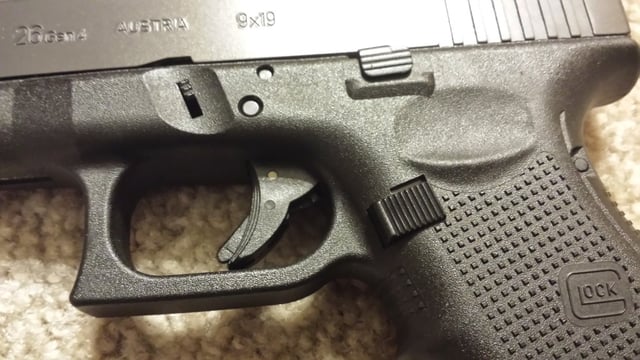The most common question that we receive from people who are new to concealed carry is this: Should I carry with a round in the chamber?
We know that this question is asked mainly due to the uncertainty people have with the safety aspects of this. We’re going to try and clear that up today.
Why carry with a round chambered?
Simple; preparedness. We’ll use this analogy: Carrying with an empty chamber is often given a response such as “you might as well carry a brick around” or “you might as well leave it at home”. While this can be true in certain circumstances, we feel that it’s a counterproductive response to the question. Remember, the question is usually asked by people who are new to concealed carry and may be new to firearms in general. Knocking them down with a response like that doesn’t help anyone and certainly doesn’t remove any uncertainties they may have.
We wrote this article, this article, and this article on carrying with a round in the chamber.
Under stress, your body reacts in a much different way than normal. A simple action such as racking the slide is made much more difficult than under normal circumstances. The chances of a failure increase dramatically. You may not pull the slide all the way back to allow it to strip the round from the magazine, or if you do manage to strip the round, you may find that it’s not seated fully in the chamber. Both of these are setting the firearm up for immediate failure. Having your round ready to go is the best case scenario for being prepared at a moments notice.
But how safe is it really?
The best test you can do is this: Let’s say you carry for a month straight. At the end of each day when you unholster your firearm, check to see how many times the trigger has been depressed. If you’re carrying in a proper holster and keep your finger away from the trigger, your answer should be zero. With any modern firearm, the trigger has to be pulled for the firearm to go bang. No trigger pull = no bang.
The keys to completely negating a negligent discharge are as follows:
- Always use a proper holster for your firearm. One that has a trigger guard and is molded for your firearm is your best option.
- Know how your firearm operates.
- Follow the 4 Rules of Gun Safety at all times.
- Always keep your finger away from the trigger until you are ready to shoot.
- Practice drawing your firearm (unloaded) from your holster until you don’t have to look down at all while drawing, and then practice some more.
- When you’re confident, practice drawing and firing at the range, and reholstering.
We can’t stress using a proper holster enough. We absolutely stand by using a molded holster that is made for your firearm. Using a generic flimsy holster can get into your trigger guard when holstering and cause your firearm to fire.
The images below show exactly that happening. This is a very dangerous situation that can be completely avoided when a proper holster is used.


The images above come from a story that cannot be viewed enough times over at itstactical.com
Give me the bottom line
The bottom line is this: if you are carrying a modern firearm, it is engineered to never discharge unless your finger pulls the trigger. Many have internal safeties as well as external safeties, and those safeties are in place for one reason; to ensure it doesn’t fire when it isn’t supposed to.
Current estimates claim that upwards of 10 Million Americans carry concealed every day. If negligent discharges were a common occurrence, we’d hear about them in the news every evening while we’re eating dinner. We don’t hear about this because it rarely happens. And when it does happen, it’s almost certainly related to operator error rather than firearm malfunction. The vast majority of firearm malfunctions happen because of bad reloads.
Rest assured (and walk around with your chambered firearm assured) that if you’re safe and know how your firearm operates, there is absolutely no reason that you should fear carrying with a round in the chamber. If after reading this article you are still unsure, you should consider holding off on carrying a firearm until you are confident in both that firearm and yourself as the owner.









![North Carolina C-Store Clerk Opens Fire On Would-Be Robbers [VIDEO]](https://imagedelivery.net/sbm_lYeJbALkepJgtmRD5w/concealednation.org/2018/02/usa1.jpg/w=728,h=381)




